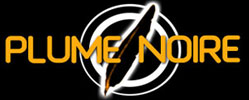
|
Ringu review
:. Director: Nakata Hideo
:. Starring: Nanako Matsushima, Miki Nakatani
:. Running Time: 1:36
:. Year: 1998
:. Country: Japan
|
Anchored in Japanese society the virus propagated by Ringu seems to spread well beyond its victims, contaminating spectators throughout the world.
Following the death of her niece under mysterious conditions Reiko (Matsushima Nanako), a journalist, decides to investigate an urban legend that says that a person will die exactly one week after having watched a supposedly "cursed" video cassette.
Based on Koji Suzuki's novel, Ringu generated a sequel, a prequel, a TV series and an American remake; a popular success which reflects the vitality of Asian horror cinema but also its supremacy in a genre stuck in the full stagnation of parody. In the first sequence the audience discovers two teenagers alone in a house followed by a Ringuing telephone. This reference to Scream is far from being fortuitous as it allows the director to clearly situate his film, breaking away from the canon of American horror movies. Instead of trying to frighten us with one more masked killer, Suzuki chooses a banal object present in each home and that has already proved itself in Cronenberg's work: the television. As a vehicle of terror he uses a videocassette to spread a curse, where the image acts like a virus contaminating its audience. The choice is judicious since the efficiency of "manufactured" fear is often related to our capacity of identification with the phobias presented. Although the mythology of the film, the evil influence of a ghost on the screen, is not very credible, the omnipresence of television in our lives channels terror more concretely than an extraordinary killer or monster. By opting for a suggestive movie rather than visual exploitation, director Nakata Hideo reinforces the distressing potential of the film.
The videocassette also carries another symbolic value beyond the curse. Although the film starts in urban civilization, the roots of the evil spell seem to be located in a more traditional society. The opposition between modern and traditional lives is perceptible throughout the film. Through the cassette—a symbol of modernism tied to technological advances—and its capacity for contamination, Suzuki appears to denounce the corruption of society and traditional values.
The production is bare and Hideo prefers to wrap the audience in a strange atmosphere that the music of Kenji Kawai punctuates with dissonant effects. The images of the video, owed to Kiyoshi Kurosawa (Cure), are intriguing. The film advances in half tones until the climax where the horror is finally completely embraced. While this approach also demonstrates a will to break stylistically from American cinema, it however doesn't allow Hideo to take total advantage of the story and make it vibrant. The cinematography is flat, which is more disappointing given that Asian cinema is known for visual perfectionism. It could have been used to reinforce the terror by rendeRingu the atmosphere as suffocating. The direction also lacks intensity: without having recourse to the well-worn clichés of the genre, Hideo would have gained by spicing up the story in order to crescendo in horror until the climax. While the story is undoubtedly intriguing, the film seems to hesitate in frightening the audience, groping around for the perfect dose of suggestion, subtlety and fright. Whether the fans like it or not, Ringu serves as an outline that only becomes fully fleshed out in its American remake.
Fred Thom

 Ringu 2 Ringu 2
 Cult Films: Reviews 2012 - present Cult Films: Reviews 2012 - present
 Cult Films: 1998 - 2011 Reviews Cult Films: 1998 - 2011 Reviews
 New Foreign Movies Reviews New Foreign Movies Reviews
|
|


